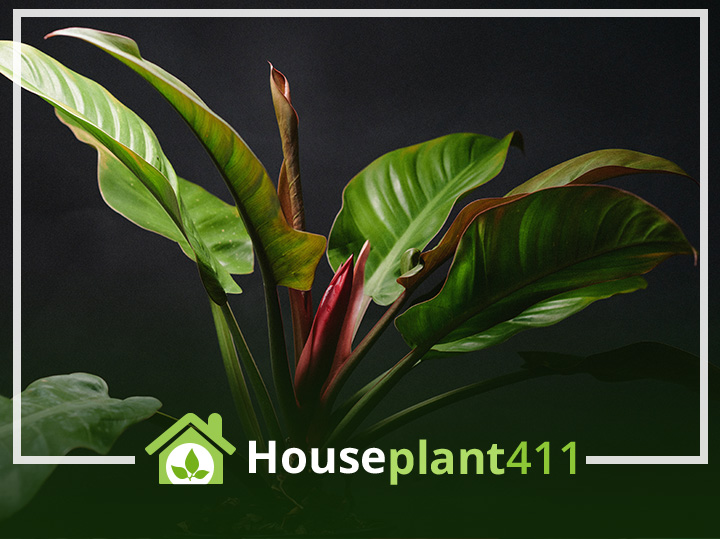Imperial Red Philodendron, commonly known as blushing philodendron or red-leaf philodendron, is a popular indoor plant for its color-changing leaves. The new leaves, when sprouted, are bright red before turning deep red, followed by purple, and turning shiny green for the rest of their lives. Its easy maintenance and care also contribute to its popularity as a house plant.
It is a hybrid plant bred to be easy to care for and pest-resistant. However, Imperial Red Philodendron is not completely immune from infestation.
Let’s take a detailed look at the common pests and diseases affecting Imperial Red Philodendron and how to cure them:
Erwinia Blight
Erwinia Blight is the most common among the pests and diseases affecting Imperial Red Philodendron. Imperial Red Philodendron develops this disease as a result of poor watering practices of the caretaker. When the plant’s leaves are watered instead of its soil, they develop brown, copper, or yellow-colored spots.
Erwinia Blight is a bacterial infection of Imperial Red Philodendron and gets its name from the bacteria Erwinia, a plant pathogen affecting various plants. The bacteria thrive in excessively moist and humid spaces. Since watering leaves don’t allow water to drain as it does with watering soil, it provides enough time for bacteria to infect the leaves.
The spots are indicative of bacterial growth spoiling the leaves. These spots can be opaque or halos. They can be scattered around the leaves or along their edges. They also multiply, meaning a leaf developing one or two spots can quickly turn brown, copper, or yellow overall and begin to smell foul.
How to Cure Erwinia Blight in Imperial Red Philodendron?
There is no cure for Erwinia Blight. Once a leaf is affected by the bacteria, it cannot be saved even under harsh sunlight or dry conditions. Thus, removing the affected leaves immediately is the only solution to save the plant. Once the affected leaves are removed, the soil in the pot with the Imperial Red Philodendron plant must be allowed to dry. Improving the watering technique further can allow the plant to recover and produce new, healthy leaves.
How to Prevent Erwinia Blight in Imperial Red Philodendron?
Imperial Red Philodendron must not be overwatered. Placing the plant in a spot where it receives air circulation can also help prevent the development of Erwinia Blight.
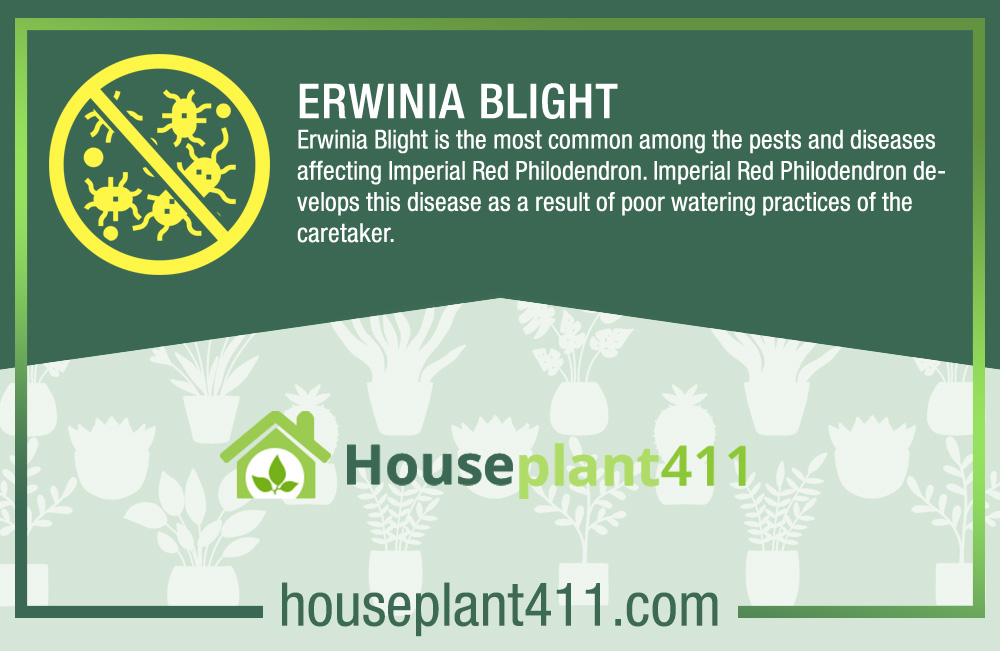
Aphids
Aphids are another common pests and disease affecting Imperial Red Philodendron. Aphids are plant pests that are so small that they cannot be spotted with the naked eye until their infestation has developed into a large colony.
Aphids are extremely harmful to all plants, including Imperial Red Philodendron. They damage the plant by targeting its stem and underside of leaves to suck the sap. Sap is a watery solution containing minerals, vitamins, and essential nutrients for all plant parts. Without getting the vital growth components, Imperial Red Philodendron infected by aphids cracks and curls before dying.
How to Cure Aphids in Imperial Red Philodendron?
Aphids in Imperial Red Philodendron can be treated with the help of Neem oil. Neem oil is derived from the neem plant, a medicinal plant used to treat various pests and diseases affecting Imperial Red Philodendron, other plants, and humans.
Neem oil can be applied to Imperial Red Philodendron affected by aphids as a mist. The solution is created by mixing one tablespoon of neem oil into half a litre of water. Pouring the solution in a spray bottle and shaking it every time before spraying is the best way to treat aphids in Imperial Red Philodendron. The solution must be sprayed directly onto the aphids to be effective.
It prevents the growth of aphids, making it easy for the plant caretaker to carefully remove and dispose of them. Since neem oil is natural, it doesn’t negatively impact the Imperial Red Philodendron in any way. Instead, neem oil attracts honeybees and ladybugs, which as beneficial insects as they feed on aphids and other insects and don’t harm the plants.
How to Prevent Aphids in Imperial Red Philodendron?
Imperial Red Philodendron can develop aphids when stressed, i.e., in overcrowded pots and poor/dry soil conditions. Therefore, Imperial Red Philodendron must be kept in conditions that promote its healthy growth. Spraying the healthy plant with neem oil and water solution often can also provide extra safety against aphid infestation.
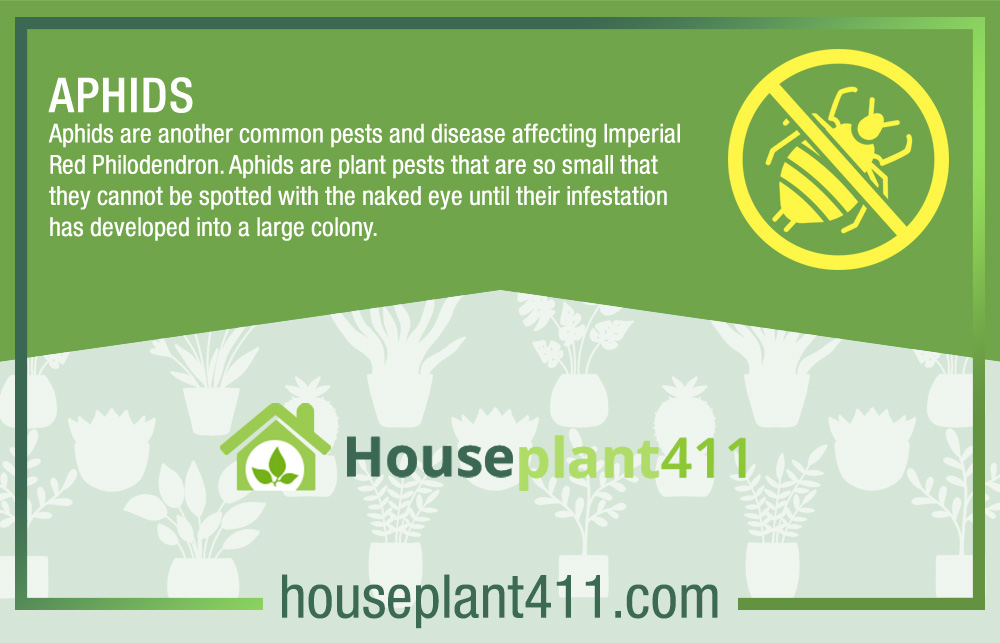
Mealybugs
Mealybugs are the most dangerous pests and diseases affecting Imperial Red Philodendron. These plant pathogens appear like minute cotton balls. They attack Imperial Red Philodendron at new growth points, making it difficult to identify them early on.
But keeping a close eye on the Imperial Red Philodendron plant can help identify young mealybugs, as they are mobile. Mealybugs secrete a sticky substance that allows them to stick themselves onto the plant surface as they mature. Due to this, they block the sunlight and inhibit the plant’s ability for photosynthesis. They also suck the sap out of the new growth points of the plant.
How to Cure Mealybugs in Imperial Red Philodendron?
The yellow sticky cards insect traps are an easy method to cure the Imperial Red Philodendron plant of mealybugs. Washing away mealybugs stuck onto the plant surface with a soap water solution or killing them with an insecticidal solution are also common methods used to cure the plant of mealybugs.
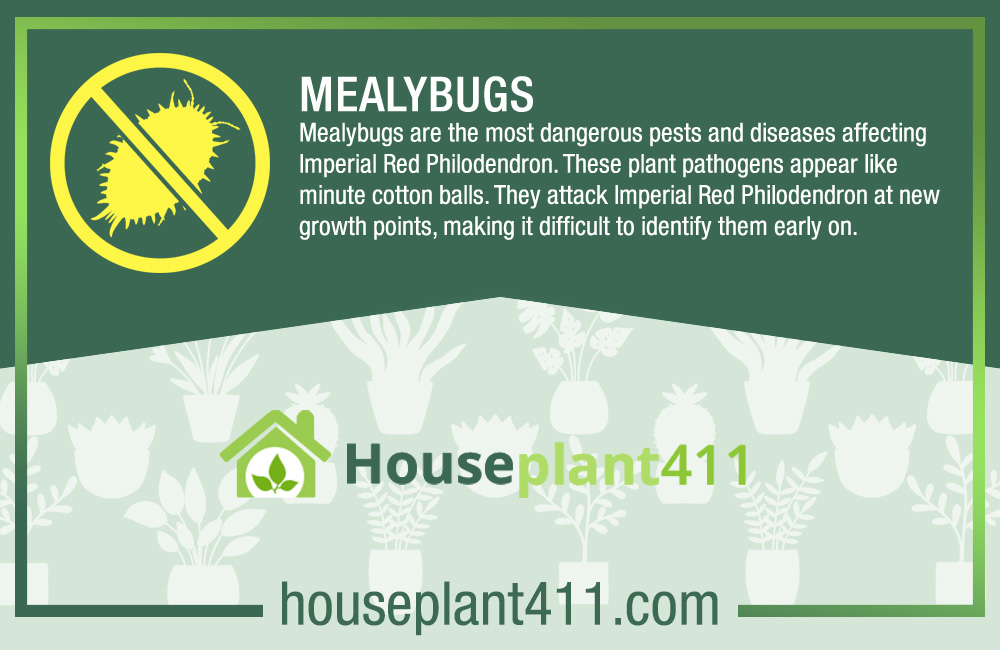
How to Prevent Mealybugs in Imperial Red Philodendron?
Washing Imperial Red Philodendron leaves with a mild soap-water solution once a month or two helps kill mealybugs early on and prevent their infestation. Applying neem oil to the plant leaves save Imperial Red Philodendron from mealybugs attack.
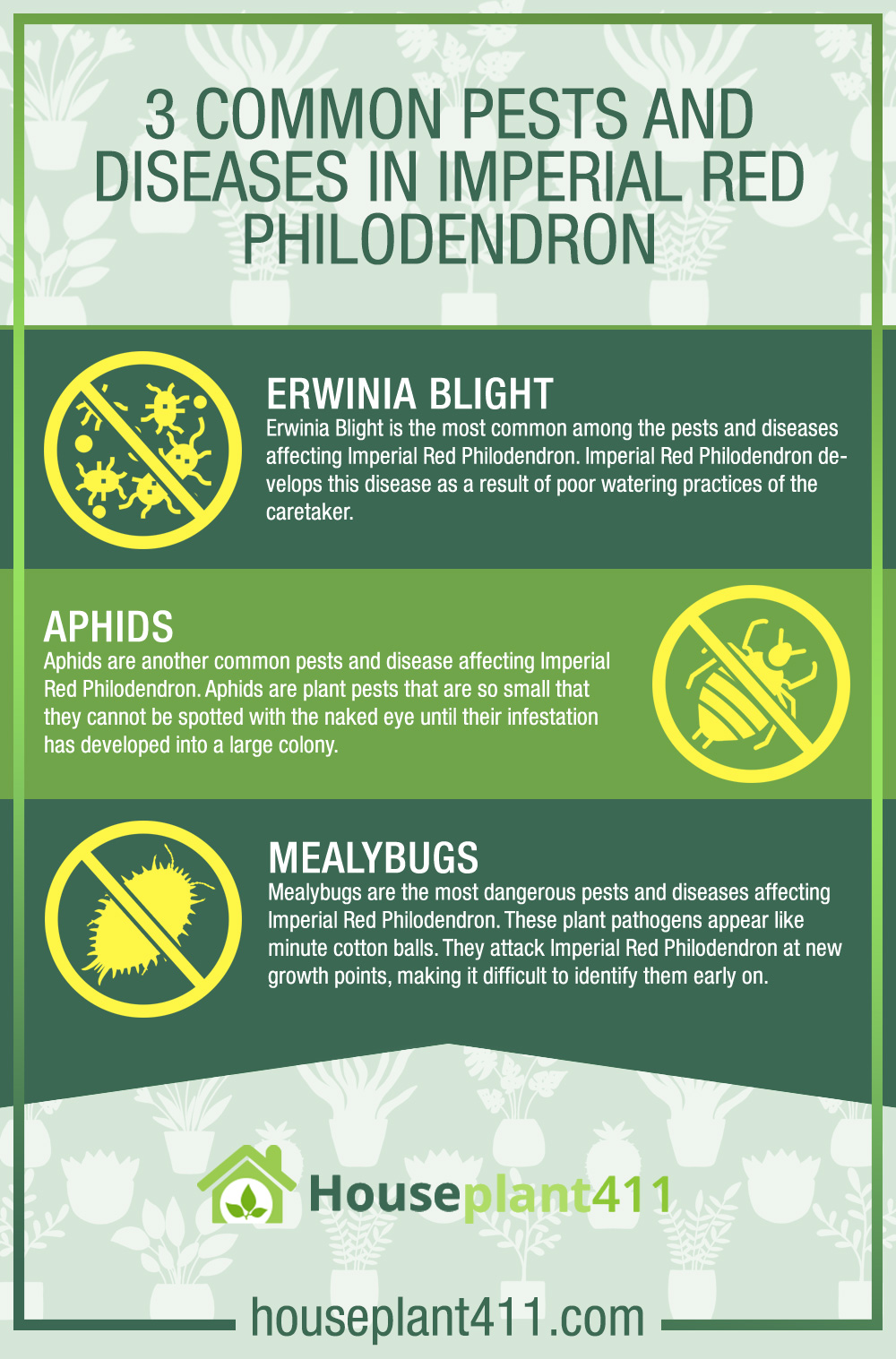
How to Prevent Pests and Diseases Affecting Imperial Red Philodendron?
Ensuring optimal growth conditions is the key to preventing pests and diseases affecting Imperial Red Philodendron. These include:
- Placing the plant in indirect light or shade
- Allowing the top of the soil in the plant to dry before watering
- Maintaining the indoor temperature between 64 and 82of
- Feeding the plant during the growing season
- Misting occasionally during dry months
- Providing a clean environment
A healthy Imperial Red Philodendron can live up to 30 years, providing its caretaker with a lifetime of beautiful sights and purified air.

